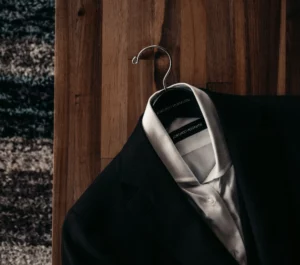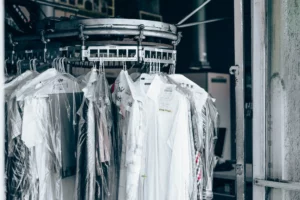 Got suits you don’t wear anymore? Don’t let them go to waste – donate them! Not only will it make you feel better, but you’ll also give someone else the chance to use and love it. But where to donate men’s suits? Find a place to positively impact yourself and others, and learn how to donate men’s suits in this article.
Got suits you don’t wear anymore? Don’t let them go to waste – donate them! Not only will it make you feel better, but you’ll also give someone else the chance to use and love it. But where to donate men’s suits? Find a place to positively impact yourself and others, and learn how to donate men’s suits in this article.
Choosing the Right Organizations
Many people wonder where you can donate a man’s suit. Well, here are some places. For example, churches usually receive donations from all those people who want to bring clothes or suits they no longer need. Besides, they are responsible for getting them to the people who need them most. There are also homeless shelters where people can pick up what they need and can’t afford. Also, the neighborhoods often have charity points where you can bring the clothes you no longer wear so that people who need them can pick them up.
It’s essential to be mindful when selecting donation centers. Not all centers can be trusted to aid those in need, as some may use donations for financial gain. To ensure that your donations are being put to good use, choose accredited and effective centers. Although it may seem easy to donate anywhere, finding a reliable place where your contributions will reach their intended destination can be challenging. If you’re unsure about a donation center, consider donating directly to small organizations you trust to deliver your donations to the right people.
Nationwide Chains and Initiatives
Several well-known organizations, such as the Salvation Army, Goodwill, and Save a Suit, accept donations of men’s suits to support those seeking employment or needing appropriate clothing. These chains and programs play a crucial role in the community by providing affordable suits and professional clothing for people seeking to improve their work and personal lives. Through these initiatives, they encourage the reuse of garments and support individuals facing economic challenges, helping them build a brighter future.
Before you go to make a suit donation, you check online for the correct address of the site, whether they actually accept suits as part of the donations, the telephone number, and other information. This is to make sure that you are satisfied when you arrive.
Local Organizations
When considering where to donate men’s suits, local organizations offer a unique opportunity to directly impact your community. These entities are often deeply rooted in the area, ensuring that your contributions reach those in need promptly and efficiently.
Organizations like local churches, community centers, and even local groups like those found on Facebook are great ways to ensure your donation impacts those in your community.
Since the needs and capabilities of such organizations differ widely, it’s always been to check online or call before assuming they accept donations.
Preparing Suits for Donation
 Cleaning and packaging suits for donation is a generous way to help individuals in need. Here’s a concise step-by-step guide:
Cleaning and packaging suits for donation is a generous way to help individuals in need. Here’s a concise step-by-step guide:
- Inspect the Suit: Examine the suit for stains, tears, or missing buttons. Donate only items in good condition.
- Read Care Labels: Check the care label for cleaning instructions. Dry clean or machine wash as indicated.
- Dry Cleaning: Take the suit to a professional cleaner if dry cleaning is required.
- Machine Wash: For machine-washable suits, use a gentle cycle with cold water.
- Stain Removal: Treat and remove stains before cleaning.
- Press or Steam: Press the suit on the correct setting after cleaning, or use a steamer to eliminate wrinkles.
- Select a Hanger: Use a wide, sturdy hanger to maintain the suit’s shape.
- Garment Bag: Cover the suit with a garment bag to protect it.
- Include Accessories: Add matching ties, belts, or dress shirts, if available.
- Label: Attach a note with the size and any relevant information.
- Find a Donation Center: Locate a local charity or thrift store.
- Contact Center: Confirm donation hours and any requirements.
- Deliver Donation: Drop off your suit, get a receipt for tax purposes, and positively impact someone’s life.
Presenting clothes that are clean and ready to wear is of utmost importance when donating clothes. This not only demonstrates respect for the recipients but also maximizes the value of the donation. Clean and well-maintained garments can be used immediately by people in need, providing warmth and dignity. Moreover, clothing in good condition is more likely to be accepted and distributed by charities. By donating clothing in good condition, we contribute to the self-esteem and confidence of those who receive it while promoting sustainability and responsible use of resources. The proper presentation of clothing reflects consideration and empathy for those who depend on these donations.
To ensure the longevity of donated men’s suits:
- Proper cleaning: Clean them before donating them to avoid stains and odors.
- Good quality: Donate high-quality suits that resist wear and tear.
- Proper storage: Keep suits in a cool, dark, dry place.
- Use suitable hangers: Avoid distortion using wide, padded hangers.
- Protection in bags: Store suits in cloth covers to protect them from dust.
- Rotation: If stored, reposition them periodically.
- Repairs needed: Make minor repairs before donating to prolong their useful life.
Alternative Ways to Contribute
Besides suits, people can donate many other items. For example, ties, shirts, and accessories. Women often donate dresses, shoes, and handbags.
Volunteering opportunities with menswear organizations may include organizing suit donation events, sorting and selecting garments, supporting professional clothing awareness campaigns, and providing style advice to people in need to boost their confidence and employability.
Tax Benefits and Receipts
Individuals may be eligible for tax deductions in some countries when making charitable donations. Donations to qualified nonprofit organizations can reduce taxable income, lowering the amount owed in taxes. Keep detailed records, including receipts, to claim deductions for cash or property contributions on your tax return, potentially leading to lower tax liabilities.
To obtain receipts for donated suits:
- Choose a Qualified Organization: Ensure the IRS (Internal Revenue Service) recognizes the organization as tax-exempt.
- Request a Receipt: When donating, ask the organization for a receipt that includes their name, a description of the donated items, their value, and a statement that no goods or services were provided in exchange for the donation.
- Keep Records: Maintain detailed records, such as photos of the donated items and any written communication, to substantiate your donation.
- Consult a Tax Professional: Seek advice from a tax professional for accurate reporting on your tax return.
Conclusion
In conclusion, donating your men’s suits is a powerful way to positively impact both yourself and others. By choosing the right organizations and preparing your suits thoughtfully, you ensure that your contributions reach those who need them most. Nationwide chains like the Salvation Army and Goodwill and local churches provide excellent avenues for your donations to support individuals striving for a brighter future.
















